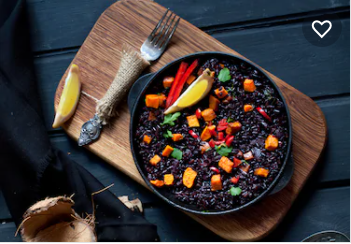Gobindbhog rice - the most scented rice of India
GOBINDOBHOG RICE
BLOG PRESENTED BY S.K.BAG
Gobindobhog is a non-Basmati type indigenous aromatic, rice highly scented, white and sticky having a sweet buttery flavor from West Bengal. The paddy variety, which got the GI (Geographical Indication) status in August 2017, is primarily cultivated in East Burdwan district in the Raina 1, Raina 2, and Khandaghosh blocks.
Gobindabhog has been categorized as a khaas dhan (special grain) and is the chosen offering for Lord Krishna on Janmashtami, thus its unique name. It tastes absolutely delectable when prepared as payesh (the Bengali version of rice kheer), and is widely used for auspicious offerings, pujas, and festivals.
It derives its name from its usage as the principal ingredient in the preparation of the offerings to Govindaji, the family deity of the Seths of Kolkata.
Gobindobhog was traditionally cultivated in the districts of Bardhaman, Hooghly, Nadia, and Birbhum. Later, it began to be cultivated in Bankura and Purulia. In Bihar, it is cultivated in Kaimur, Naugachia, and other rice bowl areas. In August 2017, the Gobinobhog rice was allotted the geographical indication (GI) tag of West Bengal by the Government of India.
It has many traditional Bengali recipes intended for it specifically.
Excellent all-purpose all cuisine rice.
Spurt in demand
There was a sudden demand for around 10,000 tonnes of Gobindobhog rice from Bangladesh this year, market sources said. Tirupati Agri, which markets the rice under the ‘Rice Villa’ brand, has exported close to 550 tonnes of Gobindobhog so far during this season. It had exported around 1,000 tonnes the whole of last year. The company exports to Bangladesh and West Asia.
Apart from Bangladesh, there has been a steady rise in demand from Kerala and other markets in South India, said Tamal Mal, Director of Greenstarline Udyog, manufacturer, trader and exporter of different varieties of rice from Bengal.
Better prospects
The increase in prices is despite the fact that the State witnessed a 17 percent rise in the production of Gobindobhog paddy this year. West Bengal produced close to 2.8 lakh tonnes of Gobindobhog paddy in 2018-19, as compared to 2.4 lakh tonnes produced in 2017-18. Nearly 55-56 percent of this is converted to rice.
Driven by the prospect of earning more, farmers in Bengal have taken to cultivating Gobindobhog. The area under cultivation, which was close to 35 hectares in 2016-17, has increased to 51 hectares in 2018-2019.
SPECIFICATIONS OF GOBINDOBHOG RICE
|



Comments
Post a Comment
In case of any quarry kindly ask.